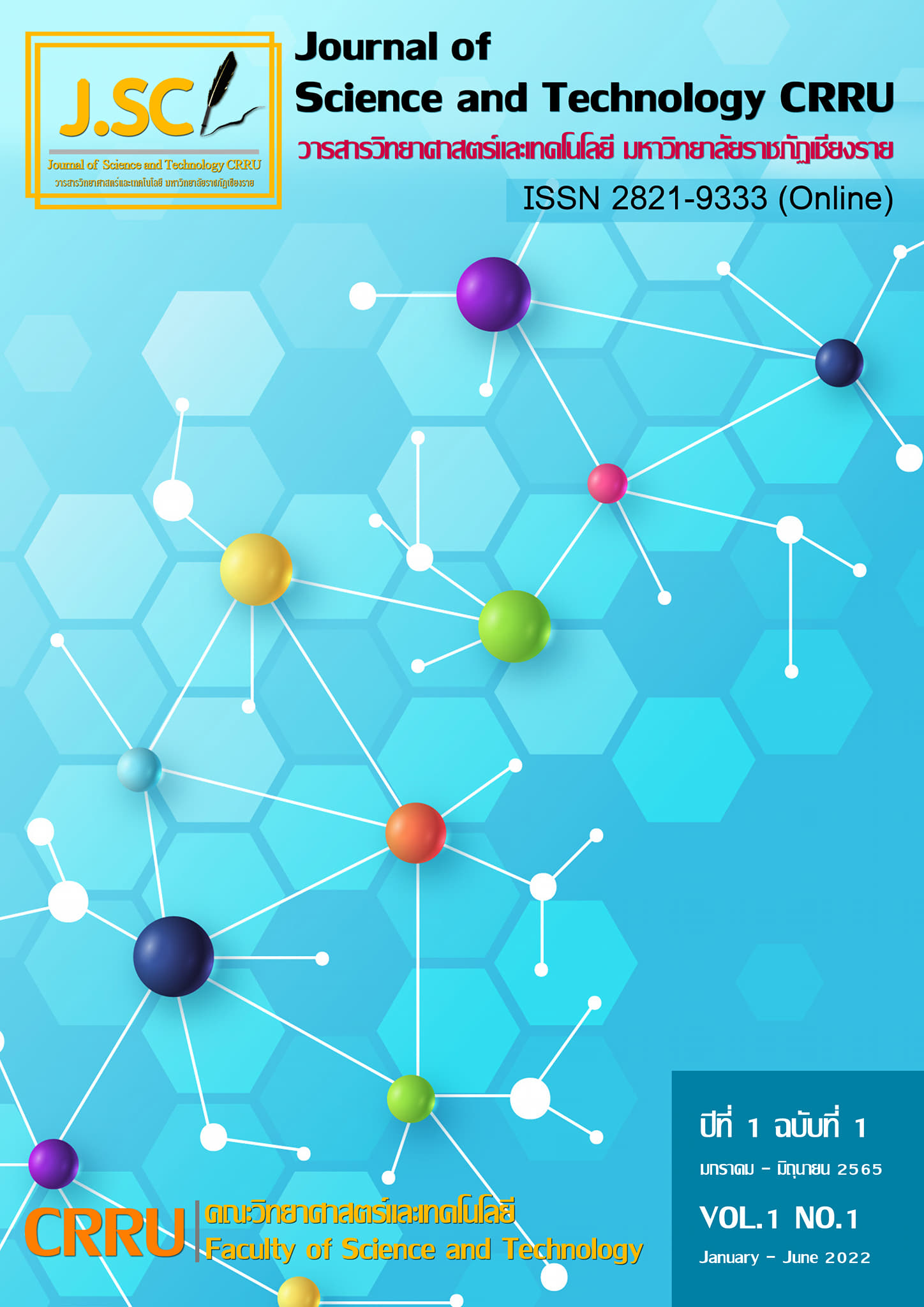Chromosome study and Cell Division in Bluish-green Rice Grasshopper (Hieroglyphus banian)
Main Article Content
Abstract
This research aims to study the chromosome and meiotic division of Bluish-green Rice Grasshopper (Hieroglyphus banian). The specimens were collected in Udon Thani province. Chromosomal preparation was performed directly from their testes. Conventional staining by Giemsa 20 % (v/v) and Ag-NOR staining were applied on the metaphase chromosomes. Chromosome counting was performed on metaphase cells under a light microscope. The result reveals that the male H. banian has diploid (2n) chromosome number of 23, with the fundamental number of 23. All of chromosomes have found to be telocentric chromosomes which including 22 autosome and one sex-chromosome. The meiotic study has confirmed and identified the diploid number and sex chromosome. The karyotype formula of this species could be deduced as 2n(23) = 22t + sex-chromosome (X0).
Article Details

This work is licensed under a Creative Commons Attribution-NonCommercial-NoDerivatives 4.0 International License.
Journal of TCI is licensed under a Creative Commons Attribution-NonCommercial-NoDerivatives 4.0 International (CC BY-NC-ND 4.0)
References
Rowell, H. and P. Flook. (2001). Caelifera. Shorthorned grasshoppers, locusts and Relatives. Tree of Life Web Project. Retrieved April 8, 2017.
Grzimek, B., Kleiman, D.G., Geist, V. and McDade, M. C. (2004). Grzimek's Animal Life Encyclopedia. Detroit: Thomson-Gale.
Chaweewan, H., Nopachon, T. and Chutima, D. (2007). Checklists of Insects and Mites in Thailand. Department of National Parks, Wildlife and Plant Conservation Ministry of Natural Resources and environment. 77-80.
พิสุทธิ์ เอกอำนวย. (2556). โลกของตั๊กแตน จิ้งหรีด 2 ตั๊กแตนต่าง ๆ Grasshoppers. พิมพ์ครั้งที่ 1. กรุงเทพฯ: พลัสเพรส ; 2556: 10-34.
Kumar, H. and Usmani, M. (2015). A review of the genus Hieroglyphus (Acrididae: Hemiacridinae) from India, with description of a new species. Tropical Zoology, 28: 1-21.
Mesa, A. and Fontanetti, C.S. (1983). Karyotypes of nine Brazilian species of acridids (Orthoptera, Acridoidea). Revista Brasileira de Genetica, 6(2): 295-305.
Bugrov, A., Warchalowska-Sliwa, E. and Maryanska -Nadachowska, A. (1994). Karyotype evolution and chromosome C-banding patterns in some podismini grasshoppers (Orthoptera, Acrididae). Caryologia, 47(2): 183-191.
Grzywacz, B., Tatsuta, H., Shikat, K. and Elżbieta, W. (2018). A comparative chromosome mapping study in Japanese Podismini grasshoppers (Orthoptera: Acrididae: Melanoplinae). Cytogenetic and Genome Research, 154(1): 37-44.
บังอร กองอิ้ม. (2544). ไมโตติกคาริโอไทป์ของตั๊กแตนหนวดสั้นบางชนิดในจังหวัดขอนแก่นและ สกลนคร. วิทยานิพนธ์ปริญญาวิทยาศาสตรมหาบัณฑิต สาขาวิชาชีววิทยา, บัณฑิตวิทยาลัย มหาวิทยาลัยขอนแก่น. ขอนแก่น.
Ashok, K.S. (2006). Cytology and cytotaxonomy of Acrididae: a summary. Records of the Zoological Survey of India, 106(3): 47-78.
Koli, Y.J., Gaikwad, S.M., Bharmal, D.L. and Bhawane, G.P. (2013). Karyotypic studies of six species of grasshopper (Orthoptera: Acrididae) from Kolhapur District, Maharashtra, India. Cytologia, 8(3): 255-260.
อรอนงค์ ยามเลย และ อิสสระ ปะทะวัง. (2562). การศึกษาแคริโอไทป์ของตั๊กแตนหัวหอกเพศผู้ (Palaeoagraecia brunnea) และตั๊กแตนข้าวไฮโรไกลฟัสเพศผู้ (Hieroglyphus banian) ในภาคเหนือของประเทศไทย. วารสารวิทยาศาสตร์และเทคโนโลยี มหาวิทยาลัยมหาสารคาม, 39(3): 290-297.
Phimphan, S., Sangpakdee, W., Sangpakdee, K. and Tanomtong, A. (2016). Chromosomal analysis and meiosis studies of Oxya chinensis (Orthoptera: Acrididae) from Thailand. The Nucleus, 60(1): 9-15.
Howell, W.M. and Black, D.A. (1980). Controlled silver-staining of nucleolus organizer regions with a protective colloidal developer: a 1-step method. Experientia, 36: 1014–1015.
Turpin, R. and Lejeune, J. (1965). Les chromosomes humains (caryotype normal et variations pathologiques). Paris: Gauthier Villars, 6: 965-966.


